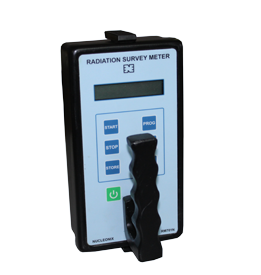FAQs — CORONAVIRUS COVID-19 [ TYPE : Informative ]
Technical Data

What is a coronavirus?
Coronaviruses are a large family of viruses which may cause illness in animals or humans. In humans, several corona viruses are known to cause respiratory infections ranging from the common cold to more severe diseases such as Middle East Respiratory Syndrome (MERS) and Severe Acute Respiratory Syndrome (SARS). The most recently discovered coronavirus causes Coronavirus disease COVID-19.
What is COVID-19?
COVID-19 is the infectious disease caused by the most recently discovered coronavirus. This new virus and disease were unknown before the outbreak began in Wuhan, China, in December 2019. COVID-19 is now a pandemic affecting many countries globally.
What are the symptoms of COVID-19?
People with COVID-19 have had a wide range of symptoms reported – ranging from mild symptoms to severe illness. Symptoms may appear 2-14 days after exposure to the virus. People with these symptoms may have COVID-19:
These symptoms are usually mild and begin gradually. Some people become infected but don't develop any symptoms and don't feel unwell. As per studies, most people (about 80%) recover from the disease without needing special treatment. Around 1 out of every 6 people who gets COVID-19 becomes seriously ill and develops difficulty in breathing. Older people, and those with underlying medical problems like high blood pressure, heart problems or diabetes, are more likely to develop serious illness. People with fever, cough and difficulty breathing should seek medical attention.
How does COVID-19 spread?
People can catch COVID-19 from others who have the virus. The virus that causes COVID-19 is thought to spread mainly from person to person, mainly through respiratory droplets produced when an infected person coughs or sneezes. These droplets can land in the mouths or noses of people who are nearby or possibly be inhaled into the lungs? Spread is more likely when people are in close contact with one another (within about 6 feet).
Can the virus that causes COVID-19 be transmitted through the air?
Studies to date suggest that the virus that causes COVID-19 is mainly transmitted through contact with respiratory droplets rather than through the air.
Can COVID-19 be caught from a person who has no symptoms?
The main way the disease spreads is through respiratory droplets expelled by someone who is coughing. The risk of catching COVID-19 from someone with no symptoms at all is very low. However, many people with COVID-19 experience only mild symptoms. This is particularly true at the early stages of the disease. It is therefore possible to catch COVID-19 from someone who has, for example, just a mild cough and does not feel ill.
Can I catch COVID-19 from the faeces of someone with the disease?
While initial investigations suggest the virus may be present in faeces in some cases, to date, there have not been reports of faecal-oral transmission of COVID-19. Additionally, there is no evidence to date on the survival of the COVID-19 virus in water or sewage. However, it is better to clean hands regularly, after using the bathroom and before eating.
What can I do to protect myself and prevent the spread of disease?
You can reduce your chances of being infected or spreading COVID-19 by taking some simple precautions:
Should I worry about COVID-19?
Illness due to COVID-19 infection is generally mild, especially for children and young adults. However, it can cause serious illness: about 1 in every 5 people who catch it need hospital care. It is therefore quite normal for people to worry about how the COVID-19 outbreak will affect them and their loved ones. We can channel our concerns into actions to protect ourselves, our loved ones and our communities. First and foremost among these actions is regular and thorough hand-washing and good respiratory hygiene. Secondly, keep informed and follow the advice of the local health authorities including any restrictions put in place on travel, movement and gatherings.
Should I wear a mask to protect myself?
CDC recommends that everyone 2 years and older wear a cloth face mask that covers their nose and mouth when they are out in the community. Wearing cloth face coverings (masks) is a public health measure people should take to reduce the spread of COVID-19 in addition to (not instead of) social distancing, frequent hand cleaning ,and other everyday preventive actions. A cloth face covering is not intended to protect the wearer but may prevent the spread of virus from the wearer to others. This would be especially important if someone is infected but does not have symptoms. Medical face masks and N95 respirators are still reserved for healthcare personnel and other first responders, as recommended by current CDC guidance.
Should children wear masks?
Either disposable or reusable Cloth face masks should not be put on babies or children younger than 2 years, because of the danger of suffocation. Children younger than 2 years of age are listed as an exception as well as anyone who has trouble breathing or is unconscious, incapacitated, or otherwise unable to remove the face covering without assistance.
How to put on, use, take off and dispose of a mask?
ul class=”footer-list about-list”>How long is the incubation period for COVID-19?
The "incubation period" means the time between catching the virus and beginning to have symptoms of the disease. Most estimates of the incubation period for COVID- 19 range from 1-14 days, most commonly around five days.
Can someone who has had COVID-19 spread the illness to others?
The virus that causes COVID-19 is spreading from person-to-person. People are thought to be most contagious when they are symptomatic (the sickest). That is why CDC recommends that these patients be isolated either in the hospital or at home (depending on how sick they are) until they are better and no longer pose a risk of infecting others. More recently the virus has also been detected in asymptomatic persons.
How long someone is actively sick can vary so the decision on when to release someone from isolation is made using a test-based or non-test-based strategy (i.e. time since illness started and time since recovery) in consultation with state and local public health officials. The decision involves considering the specifics of each situation, including disease severity, illness signs and symptoms, and the results of laboratory testing for that patient.
Someone who has been released from isolation is not considered to pose a risk of infection to others.
Can someone who has been quarantined for COVID-19 spread the illness to others?
Quarantine means separating a person or group of people who have been exposed to a contagious disease but have not developed illness (symptoms) from others who have not been exposed, in order to prevent the possible spread of that disease. Quarantine is usually established for the incubation period of the communicable disease, which is the span of time during which people have developed illness after exposure. For COVID-19, the period of quarantine is 14 days from the last date of exposure because the incubation period for this virus is 2 to 14 days. Someone who has been released from COVID-19 quarantine is not considered a risk for spreading the virus to others because they have not developed illness during the incubation period.
What is the difference between self-isolation, self-quarantine and social distancing?
Quarantine means restricting activities or separating people who are not ill themselves but may have been exposed to COVID-19. The goal is to prevent spread of the disease at the time when people just develop symptoms.
Isolation means separating people who are ill with symptoms of COVID-19 and may be infectious to prevent the spread of the disease.
Physical distancing means being physically apart. WHO recommends keeping at least 6 feet distance from others. This is a general measure that everyone should take even if they are well with no known exposure to COVID-19.
What is community spread?
Community spread means people have been infected with the virus in an area, including some who are not sure how or where they became infected.
How long does the virus survive on surfaces?
It is not certain how long the virus that causes COVID-19 survives on surfaces, but it seems to behave like other coronaviruses. Studies suggest that coronaviruses (including preliminary information on the COVID-19 virus) may persist on surfaces for a few hours or up to several days. This may vary under different conditions (e.g. type of surface, temperature or humidity of the environment). If you think a surface may be infected, clean it with a simple disinfectant to kill the virus and protect yourself and others. Wash your hands thoroughly. A detailed report is given separately on ' How long Corona virus lives on surfaces" in the next Section.
Is it safe to receive a package from any area where COVID-19 has been reported?
Yes. The likelihood of an infected person contaminating commercial goods is low and the risk of catching the virus that causes COVID-19 from a package that has been moved, travelled, and exposed to different conditions and temperature is also low.
There is still a lot that is unknown about COVID-19 and how it spreads. Coronaviruses are thought to be spread most often by respiratory droplets. Although the virus can survive for a short period on some surfaces, it is unlikely to be spread from domestic or international mail, products or packaging. However, it may be possible that people can get COVID-19 by touching a surface or object that has the virus on it and then touching their own mouth, nose, or possibly their eyes, but this is not thought to be the main way the virus spreads.
What is the difference between cleaning and disinfecting?
Cleaning with soap and water removes germs, dirt, and impurities from surfaces. It lowers the risk of spreading infection. Disinfecting kills germs on surfaces. By killing germs on a surface after cleaning, it can further lower the risk of spreading infection.
What temperature kills the virus that causes COVID19?
Generally, coronaviruses survive for shorter periods at higher temperatures and higher humidity than in cooler or dryer environments. However, we don’t have direct data for this virus, nor do we have direct data for a temperature-based cutoff for inactivation at this point. The necessary temperature would also be based on the materials of the surface, the environment, etc. Regardless of temperature please follow CDC’s guidance for cleaning and disinfection.
Can the virus that causesCOVID-19 spread through drinking water?
The virus that causes COVID-19 has not been detected in drinking water. Conventional water treatment methods that use filtration and disinfection, such as those in most municipal drinking water systems, should remove or inactivate the virus that causes COVID-19.
How to shop groceries safely?
While grocery shopping, keep at least 6 feet distance from others and avoid touching your eyes, mouth and nose. If possible, sanitize the handles of shopping trolleys or baskets before shopping. Once home, wash your hands thoroughly and also after handling and storing your purchased products. There is currently no confirmed case of COVID-19 transmitted through food or food packaging.







